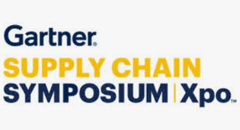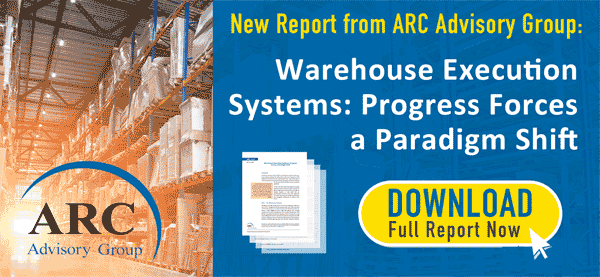Couch Report: Gartner Supply Chain Executive Symposium 2020
As with the recent CSCMP conference, for many years I have issued written "trip reports" on what used to be called the Gartner Supply Chain Executive Forum, actually originally started many years ago by AMR Reseach held each year in Scottsdale, AZ, before Gartner acquired AMR in 2009.
After Gartner bought AMR, it infused additional organizational and marketing muscle into the conference, largely to the good. I am sure the event is now much more profitable for Gartner than it ever was for AMR.
Attendance has been growing rapidly, and attracting a rising number of supply chain executives.
| GILMORE SAYS: |
Can the overall economy rally given all that economic turmoil, even if Amazon and Walmart are thriving?
WHAT DO YOU SAY?
Send us your
Feedback here
|
With that success, the 2020 event in the Gartner hierarchy was to be elevated to a higher status of "Symposium," and moved after decades from Scottsdale to Orlando, but still held in May.
Then of course the pandemic hit, and like all events was postponed from May and then moved to a virtual event, held on-line this week. So instead of a trip report, you get a couch report, since that's where I enjoyed the conference this year.
I will have more to say on the total event later, but this week willl focus on the all-important opening day keynote presentation, which sets the theme for the rest of the conference.
That presentation was titled "Navigating the Turns: Preparing Supply Chains to Think and Act Differently," presented by Gartner analysts Tom Enright and Lisa Callinan, both I believe from the UK.
The two started to craft the opening keynote last December, when the virus outbreak was just beginning in China and really on nobody's radar. Perhaps presciently, the theme even then was planned to be on how companies can better prepare for and address major supply chain disruptions.
The disruption from the pandemic was even greater than the two were originally envisioning, but directionally in turned out they were on the right track already.
The core theme of the presentation improving adaptaibility, along strategic, investment and leadership vectors.
After a brief introduction, Gartner played a nice video interlude that noted such realities as "what was reliable became unreliable," and "what was full became empty" as a result of the virus, ending by praising supply chain's role in keeping food and health supplies flowing.
That, Callinan said, included companies that found a "deeper set of purpose" by switching to make protective devices or ventilators, including Bacardi, Ford, Nike and a number of others.
The pandemic exposed limitations of current supply chain thinking and practice, such as approaches to risk management and reliance on Chinese or other low cost country sourcing, Callinan noted.
She added that supply chain opportunities and threats were likely to become more frequent and lead to greater supply chain uncertainty. I will say it is not clear to me why that should be the case, but I will agree it would appear to be true.
Interestingly, Enright said a big problem right now is that some 80% of companies develop their strategic plans along fixed calendar year cycles.
"The approach is limiting at best, and at worse dangerous," Enright said, because it leads to strategies that are quickly out of date.
"The world changes a whole lot more than our strategies do," he added.
I guess that is probably true, to a degree, though I am sure few companies back in March when corona hit said "We'll think about what to do in the Q4 strategic planning cycle"
And it seems to me that if strategies become more fluid, there is certainly the risk of being too "twitchy" in terms of decision-making - and bringing into question whether there is a strategy at all, or simply a continuous cycle of tactical response to trends and events.
Several years ago, Gartner introduced the concept of "bi-modal" supply chains, featured unusually as the keynote theme in consecutive conferences. What is a bi-modal supply chain? One that balances traditional supply chain focus on cost and efficiency with support for innovation, both in the supply chain itself and in enabling innovation in company products and service offerings.
 The problem, Enright said, is that in times of crisis, most companies get out of balance, focusing attention and investment on the traditional mode at the expense of innovation. The problem, Enright said, is that in times of crisis, most companies get out of balance, focusing attention and investment on the traditional mode at the expense of innovation.
Of course, I will note, in some cases that may be a matter of survival, but I am OK to say perhaps a significant percentage of compianies take it to an extreme they really don't have to.
These companies "steal from the future to pay for the present," Enright said in a good line.
Going back to the theme of making strategy, investment and leadership more adaptable, Enright said there is research that says the most successful companies are often ones that can maintain transformative growth bets across business cycles, which makes commonsense actually.
Along the same line, Callinan said that how a company enters, endures and exits a "turn" in the environment is a key factor in subsequent performance. These companies "plan for a future of uncertainty," she added.
Callinan also said that companies in a crisis normally focus on surviving the threat and hanging on to then prepare for the "new normal" that emerges.
There are two problem with that thinking, Callinan says. First, survival cannot be the goal. And second, there really is no new normal coming.
It wasn't really clarified why survival cannot be the object, but as for the second point, she said uncertainty and disruption have become the most common modes, interspersed with brief periods of something like normality.
The key is to embrace an adaptive approach, Enright said.
For strategy, as already noted, that means ditching the calendar-driven model to one that is almost continuous.
For supply chain investment, it means developing (not easy) a process where investments can also be made outside traditional annual budgets, as market requirements change rapidly.
For leadership, it's about "fast-paced, bold decision-making," Enright said, and embracing a more collective approach to solving problems.
Enright cites as an example retailer Tractor Supply Company (TSC), which has developed a sophisticated system of continuous monitoring of the environment and trends. Some identified trends provide an actionable opportunity or threat. Others need further monitoring. Others can be ignored.
TSC supply chain chief Colin Yankee came on in a brief video clip and agreed the annual approach to strategic planning just doesn't cut it any more in today's volatile markets. Such strategic planning needs to be "always on," Yankee said.
He said the supply chain-driven trend reports are sent to board members and key executives monthly. Key is identifying which impactful trends are not accounted for in the current strategic plan.
Good stuff from Yankee.
Callinan added that companies should pay special heed to trends that are morphing or accelerating, and see if a market leader has already adapted.
Finally, Gartner recommends a new approach to innovation investments. As Johnson & Johnson is doing, the idea is to start small when there is a lot of uncertainty, then ramping up in phases as the value is better understood and uncertainty reduced.
That is pretty much the day 1 keynote story. Here are my reactions.
Adaptability is great, who doesn't want more of it? But it also comes at some cost, as "real options" theory and many other pundits tell us.
How do you draw that line? That is the real and unanswered question.
I will add that this presentation was clearly and often quite specifically aimed at senior supply chain executives. In fact, much of it would have been just fine for a CEO audience, not just CSCOs.
How that plays out in coming years in terms of Gartner content and reseachn will be very interesting indeed.
Next week, I will be back on some thoughts on the election outcome, assuming we have one, followed the week after by highlights from the Gartner breakout sessions.
Any reaction to this Gartner conference keynote summary? Were you there? What did you think? Let us know your thought at the Feedback section below.
|









 The problem, Enright said, is that in times of crisis, most companies get out of balance, focusing attention and investment on the traditional mode at the expense of innovation.
The problem, Enright said, is that in times of crisis, most companies get out of balance, focusing attention and investment on the traditional mode at the expense of innovation.

